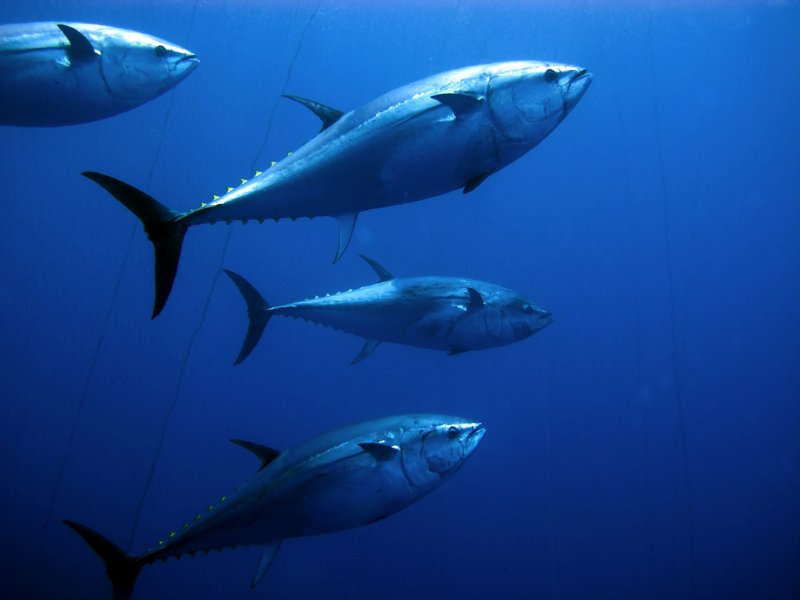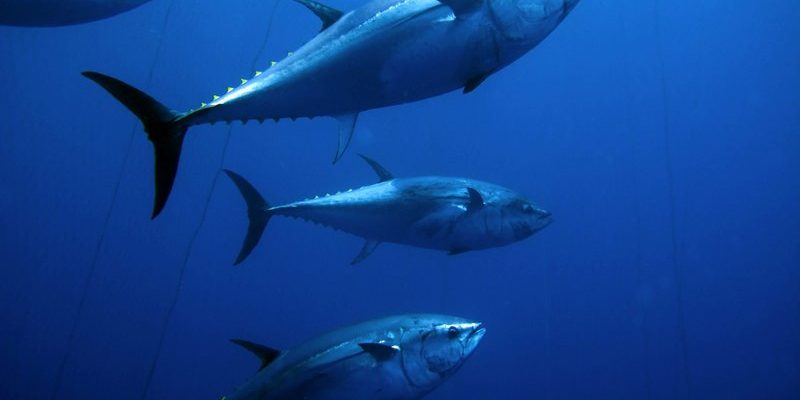
Bluefin tuna are not just found in any waters. Their habitats are carefully defined by the temperatures of the oceans and the availability of food. These fish are known for their long migrations, which can take them from the warm waters of the Gulf of Mexico all the way to the colder parts of the North Atlantic. Let’s dive deeper into the fascinating world of bluefin tuna and explore the specific places where they thrive.
The Oceanic Habitat of Bluefin Tuna
Bluefin tuna predominantly inhabit the open ocean, known as the pelagic zone. This area stretches from the surface of the sea down to about 200 meters deep. It’s a vast space where sunlight penetrates, making it suitable for photosynthesis and thus for a diverse range of marine life.
You might be wondering why bluefin tuna prefer this habitat. The pelagic zone is rich in nutrients and provides ample opportunities for hunting. Bluefin tuna are carnivorous and enjoy a diet mainly consisting of fish, squid, and crustaceans. They rely on the abundance of these prey species, which thrive in the rich waters of the open ocean.
During their lifetime, bluefin tuna can be found in various oceanic regions. They are mainly located in the Atlantic Ocean, particularly the North Atlantic, and the Mediterranean Sea. Here, they find favorable conditions for spawning, which are crucial for their reproduction.
Migration Patterns
Bluefin tuna are known for their incredible migration patterns. These fish travel thousands of miles annually in search of warmer waters and food availability. In the spring, they tend to migrate north from the warmer Gulf of Mexico to the cooler waters of the North Atlantic, following the seasonal shifts in temperature and food supply.
During the fall, they reverse this trend, heading back south to spawn, especially in the Gulf of Mexico. This consistent migration showcases their ability to adapt to different environments while ensuring they find food and breeding grounds.
Coastal Areas and Their Importance
Coastal regions are another crucial habitat for bluefin tuna. They often frequent areas near the continental shelf, where deep ocean waters meet shallower seas. This environment is teeming with life and serves as an ideal hunting ground.
The mixing of waters in these coastal areas leads to increased nutrient availability, attracting baitfish and other prey species bluefin tuna love. Think of coastal zones as bustling marketplaces, where the tuna can easily find their next meal.
Moreover, coastal areas often feature habitats like estuaries, where rivers meet the sea. These dynamic environments support diverse marine life and play a vital role in the tuna’s life cycle. By understanding the importance of these habitats, we gain insight into how human activity, like fishing and pollution, can impact tuna populations.
Threats to Coastal Habitats
Unfortunately, coastal habitats face several threats that can impact the bluefin tuna population. Overfishing, pollution, and habitat destruction can disrupt the delicate ecosystems that support these magnificent fish. When human activities compromise their hunting grounds, it can lead to declines in tuna populations, ultimately affecting the health of the ocean.
Sustainable fishing practices and preservation of these coastal environments are vital for ensuring that bluefin tuna and other marine species continue to thrive.
Bluefin Tuna in Rivers? It’s Possible!
You might be surprised to learn that bluefin tuna can occasionally be found in rivers, but it’s not quite as common. They typically don’t live there permanently; rather, they might venture into river mouths or estuaries. These areas serve as conduits to the open ocean and can offer a rich array of food resources.
For instance, juvenile bluefin tuna may be found in brackish waters, which are places where freshwater from rivers mixes with saltwater from the ocean. These habitats can provide a safe haven for younger fish as they grow before heading out into the open ocean.
It’s important to remember that while they can be found in these areas, bluefin tuna dive back into deeper, saltier waters as they mature and need more food.
Notable River Habitats
In certain regions, like the Chesapeake Bay in the United States, bluefin tuna may be spotted near river mouths, especially during their spawning season. These areas attract a variety of fish species, making them perfect for hungry bluefin tuna.
By migrating into these transitional zones, bluefin tuna can take advantage of the unique food web that exists there. These habitats, though temporary, play an important role in the life cycle of bluefin tuna, illustrating their adaptability.
The Impact of Climate Change
Climate change poses a significant threat to the habitats of bluefin tuna. As ocean temperatures rise, the migration patterns of these fish may shift dramatically. Warmer waters can alter the distribution of prey species, forcing tuna to search farther and harder for food.
Increased ocean temperatures can also affect spawning habitats. If the preferred conditions for breeding become too warm or unsuitable, it could lead to reduced reproductive success and, ultimately, population declines.
Moreover, the acidification of oceans due to increased carbon dioxide levels can impact fish populations at all levels, including bluefin tuna. Understanding these changes is crucial for conservation efforts aimed at protecting these magnificent fish.
Conservation Efforts
To counteract the effects of climate change, various organizations are working to monitor tuna populations and promote sustainable fishing practices. Efforts include enforcing catch limits, establishing marine protected areas, and conducting research to understand the bluefin tuna’s migratory behavior better.
Conservation is not just about protecting bluefin tuna; it’s about preserving the entire ecosystem they inhabit. By understanding where bluefin tuna are found and the challenges they face, we can take meaningful steps to ensure their survival.
Bluefin tuna are not just stunning fish; they are essential players in the ocean ecosystem. Their habitats, from the open ocean to coastal areas and occasionally rivers, are intricately linked to their ability to thrive. Learning where bluefin tuna can be found helps us understand their life cycle, migration patterns, and the potential threats they encounter.
As stewards of the ocean, we all have a role to play in preserving these habitats and protecting bluefin tuna. By supporting sustainable fishing practices and advocating for the protection of our coastal and ocean environments, we can ensure that these magnificent fish will continue to grace our oceans for generations to come. So next time you think of bluefin tuna, remember their incredible journey through various waters and the importance of their habitats.

